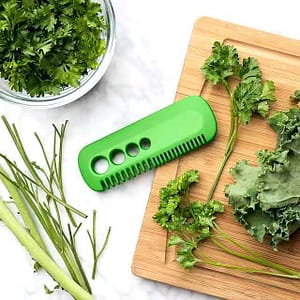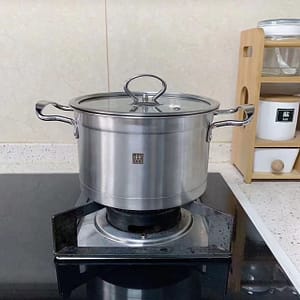
Blog Details

Are You Making These 5 Common Cooking Mistakes That Are Silently Harming Your Health?
We all strive to eat healthier, choosing fresh ingredients and mindful portions. But what if some of our seemingly innocuous cooking habits are actually working against us, silently chipping away at our health? The truth is, the way we prepare our food can be just as crucial as the ingredients themselves.
You might be surprised to learn that some common kitchen practices, often learned from family or simply picked up over time, could be exposing you to unnecessary risks or diminishing the nutritional value of your meals. Let’s uncover these five widespread cooking mistakes and how to fix them, turning your kitchen into a true sanctuary of health.
1. Overheating Healthy Oils
Many popular healthy oils like olive oil, avocado oil, and coconut oil are fantastic for you – but only when used correctly. Heating oils past their “smoke point” causes them to break down, forming harmful compounds and free radicals that can contribute to inflammation and oxidative stress in the body.
- The Mistake: Using extra virgin olive oil for high-heat searing or deep frying.
- The Solution: Save delicate oils like EVOO for low-to-medium heat cooking, dressings, and finishing. For high-heat cooking (stir-frying, roasting), opt for oils with higher smoke points like avocado oil, grapeseed oil, or refined coconut oil. A good stainless steel pan will help you achieve even heat distribution, reducing the need for excessively high temperatures.
2. Not Cleaning Your Cutting Boards (Enough)
This one might seem obvious, but cross-contamination is a silent saboteur in many kitchens. Using the same cutting board for raw meat, poultry, or fish, and then immediately for vegetables without thorough cleaning, can transfer harmful bacteria like Salmonella and E. coli directly into your fresh produce.
- The Mistake: Using one cutting board for everything, or not sanitizing it properly between uses.
- The Solution: Invest in separate cutting boards for raw meats and produce (many people use color-coded boards for this). Always wash cutting boards thoroughly with hot, soapy water immediately after contact with raw protein, and consider sanitizing them regularly with a diluted bleach solution or a food-safe disinfectant. Our durable and easy-to-clean polypropylene cutting boards are designed to minimize bacterial retention.
3. Overcooking Vegetables
We often aim for well-done vegetables, but sometimes this leads to a significant loss of vital nutrients. Many water-soluble vitamins (like Vitamin C and B vitamins) and some antioxidants are highly sensitive to heat and can leach into cooking water or break down with prolonged exposure.
- The Mistake: Boiling vegetables until mushy, or roasting them for too long at high temperatures.
- The Solution: Opt for quicker cooking methods that retain nutrients, such as steaming, light sautéing, or blanching. If roasting, aim for tender-crisp, and use a reliable oven thermometer to ensure precise cooking temperatures. Even a quick stir-fry in a quality wok can preserve more nutrients than prolonged boiling.
4. Relying Too Much on Non-Stick Cookware (When Damaged)
While convenient, traditional non-stick coatings, particularly those containing PFAS chemicals (like PFOA and PTFE), can pose risks when scratched, chipped, or overheated. Damaged non-stick surfaces can release harmful compounds into your food and the air.
- The Mistake: Continuing to use scratched or flaking non-stick pans, or overheating them.
- The Solution: Inspect your non-stick pans regularly. If you see any scratches or peeling, it’s time to replace them. Consider investing in alternatives like cast iron, stainless steel, or ceramic non-stick options, which offer durable, non-toxic cooking surfaces. When using any non-stick, avoid overheating and use wooden or silicone utensils to prevent scratches.
5. Not Washing Produce Thoroughly
Even if you buy organic, fruits and vegetables can still carry dirt, bacteria, and residual pesticides from handling and transportation. A quick rinse under the tap isn’t always enough to remove these contaminants.
- The Mistake: Giving produce a cursory rinse, or skipping washing for items like bananas (where you don’t eat the peel).
- The Solution: Wash all produce thoroughly under running water, even those with inedible peels. For firmer produce (like apples, potatoes, carrots), use a clean produce brush to scrub the surface. For leafy greens, separate the leaves and rinse each one. You can also use a mixture of water and vinegar (1 part vinegar to 3 parts water) for a more thorough clean, followed by a rinse with plain water.
By simply being aware of these common cooking pitfalls and making a few mindful adjustments, you can significantly enhance the health benefits of your homemade meals and protect your well-being for years to come. Your kitchen is where nourishment begins – ensure it’s working for, not against, your health goals!
FAQs About Healthy Cooking Habits
Q1: How can I tell if my cooking oil is too hot?
A1: The most common sign is visible smoke. Once an oil starts smoking, it’s breaking down and forming harmful compounds. Remove it from the heat immediately and consider replacing it if it’s been smoking for a while.
Q2: Is it safe to put wooden cutting boards in the dishwasher?
A2: No, wooden cutting boards should not be put in the dishwasher. The high heat and prolonged moisture can cause them to warp, crack, or harbor bacteria in crevices. Hand wash with hot, soapy water and allow them to air dry thoroughly.
Q3: What’s the best way to clean leafy greens to remove pesticides?
A3: While no method removes 100% of pesticides, washing leafy greens under running water and gently rubbing the leaves is effective. For a more thorough rinse, you can soak them in a bowl of water with a tablespoon of baking soda for 15 minutes, then rinse.
Q4: Should I always use olive oil for cooking?
A4: Not always. While extra virgin olive oil is excellent for its flavor and health benefits, it has a relatively low smoke point. For high-heat cooking like searing or deep frying, oils with higher smoke points like avocado, refined coconut, or grapeseed oil are better choices.
Q5: How often should I replace my non-stick pans?
A5: It depends on usage, but typically every 1-3 years for heavily used pans, or when you notice visible scratches, flaking, or a significant decrease in non-stick performance. Prioritize replacement if the coating is damaged, regardless of age.
Our Products
-
Sweettreats Non-stick Copper Skillet
$30.49 – $55.44 Select options This product has multiple variants. The options may be chosen on the product page -
Vegetable Leaf Peeler Vegetable Peeler Mini
$7.55 Select options This product has multiple variants. The options may be chosen on the product page -
Double Same Style Stainless Steel Stock Pot Steamer
$64.52 Select options This product has multiple variants. The options may be chosen on the product page -
Stainless Steel Colander Noodle Dumplings Mesh Basket
$27.73 – $32.26 Select options This product has multiple variants. The options may be chosen on the product page -
3 In 1 Multifunctional Rotary Paring Knife
$9.27 – $31.01 Select options This product has multiple variants. The options may be chosen on the product page -
Watermelon Cutting Artifact
$7.83 – $8.38 Select options This product has multiple variants. The options may be chosen on the product page
Products
-
Sweettreats Non-stick Copper Skillet
$30.49 – $55.44 Select options This product has multiple variants. The options may be chosen on the product page -
Vegetable Leaf Peeler Vegetable Peeler Mini
$7.55 Select options This product has multiple variants. The options may be chosen on the product page -
Double Same Style Stainless Steel Stock Pot Steamer
$64.52 Select options This product has multiple variants. The options may be chosen on the product page -
Stainless Steel Colander Noodle Dumplings Mesh Basket
$27.73 – $32.26 Select options This product has multiple variants. The options may be chosen on the product page










